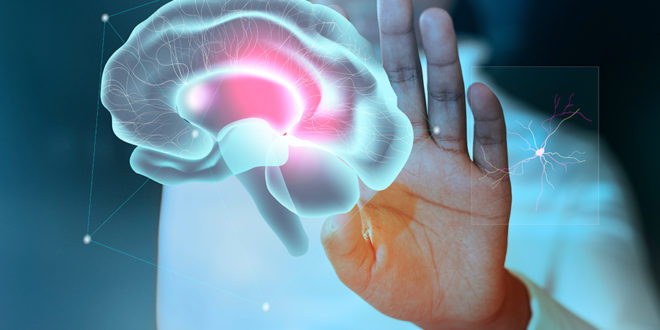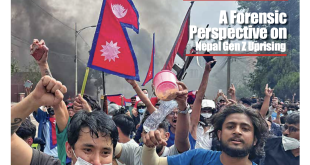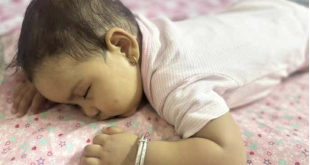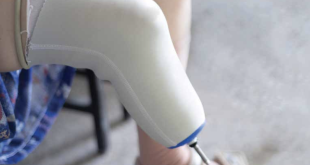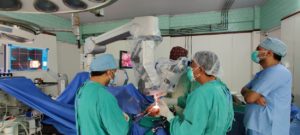
Neuroscience in Nepal has come a long way, from lacking diagnostic facilities and pathogen confirmation to reaching an era of modern neurosurgery. Neuroscience encompasses both neurosurgery and neurology, and we can say that neurosurgery is gaining momentum in case of Nepal, whereas neurology is still lagging behind.
In 1963, Dr. Dinesh N. Gongal became the first to perform a neurosurgical procedure in Nepal, a sub-temporal decompression in a young lady. He continued to practice neurosurgery till 1990. During his time, neurosurgical service remained a very challenging task, as there was neither any reliable diagnostic tool, nor proper operating equipment. The branch of neurosurgery was neglected so much that he had to operate in the evening when all the general surgeons had left the hospital!
Here in this article, we got in touch with the first M. Ch. Neurosurgeon in Nepal, Prof. Dr. Prakash Bista, to know about the evolution of neuroscience in Nepal. When Dr. Bista joined Neurosurgery in 1990, the late Prof. Upendra Devkota had already returned from the UK after completing his training in modern neurosurgery. By that time, a separate head injury and neurosurgical ward was established at Bir Hospital with a separate operating room. But there were only basic surgical instruments, with no trained auxiliary health professionals.
Modern equipment and technology required for neurosurgery were almost nonexistent, explains Dr. Bista. There was no operating microscope. Neuronavigation and neuroendoscope couldn’t be even imagined. Introduction of CT scan (first time in Nepal) revolutionized neurosurgical diagnosis. Still, there was acute shortage of human resource. Therefore, even fully trained neurosurgeons wouldn’t see neurotrauma cases and head and spinal injuries, which were left to be managed by the registrar and medical officers.
When Dr. Bista was a fresh medical graduate, he got to manage neurotrauma cases in 1990 in the neurosurgical unit as a medical officer. His initial neurosurgical practice involved managing neurotrauma cases, including operating extradural hematoma and compound depressed skull fractures. It is needless to say that Bir Hospital was the only center that treated head and spinal injuries, and the doctors doing craniotomy could barely be counted on one’s fingers, he recalls. He used to assist in neurosurgical operations to his then consultant late Prof. Upendra Devkota in the day time and operate independently on head injuries at night time. He had championed doing craniotomy for the trauma, so the cases from other units were referred to him for operation.
Learning to operate on head injury alone was not enough to become a neurosurgeon, for which he had to be first trained in general surgery and super specialize in neurosurgery. He started working in both neurosurgery and general surgery simultaneously and prepared for his FRCS part I exam. Unfortunately, he was not allowed to sit in the exam on the ground that he did his MBBS from Rajsahi Medical College, Bangladesh, which was not recognized by GMC (General Medical council of UK). This was an unexpected blow to further his studies; however, this didn’t deter him from becoming a surgeon, and then a neurosurgeon.
Dr. Bista went to Dhaka, Bangladesh, to do his MS in General Surgery and came back to join the department of surgery in Bir Hospital in1997. While working in General Surgery, he was approached by Dr. Devkota to join his neurosurgical unit, and this was the turning point of his life and career. Although he had worked in neurosurgery before, he hadn’t decided to be a neurosurgeon, which needed three years more extensive study, which was not feasible at that time. Because of Prof. Devkota’s insistence and promised scope, opportunities, and brighter future, he couldn’t resist and ended joining him in 1997.
This had two facets—first, he had to leave general surgery, in which he had mastered, and secondly, he had to undergo the extensive training and reading about neurosurgery for three years or more. “The second part was not difficult, but the first part about leaving general surgery in terms of earning and promotion, as compared to my contemporary colleagues, was the most difficult part,” he says. This is evident from the fact that it took him 25 years to be a consultant neurosurgeon, though he was working as a neurosurgeon his entire life.
Dr. Bista started working as a doctor towards the end of the Panchayat system, and there have been many changes in system and governance since then. Many of his colleagues had abundance of opportunities, and one was Dr. Devkota becoming the health minister under the direct rule of then King Gyanendra in 2059 BS. One of the historical achievements in the country during his tenure as health minister was the establishment of the National Academy of Medical Sciences. “When he became minister, his involvement in neurosurgery started declining, and the load was on our shoulders,” he recalls. Till Dr. Devkota was involved in neurosurgery at Bir Hospital, the only equipment added in the department was a donated drill system and microscope. “The drill and microscope were not allowed to be used by us; our primary function till then was to prepare for surgery, follow-up postoperatively, and open and close the skull during surgery. This had great negative impact on the skill development of junior neurosurgeons. As a result, some of the faculty left to join other hospitals.”
After Dr. Devkota left Bir Hospital, Dr. Pawan Sultania became the head of department in 2008, when the actual modernization of neurosurgery started in Bir Hospital. During his tenure, the unit was upgraded to a fully functional department. A new drill system was added, as well as an ultrasonic aspirator machine that profoundly helps in removing brain tumor without brain injury, and a new state-of-the-art microscope with ICG and monitor to show operations to trainees were added. This took neurosurgery to another level. “By the time I took over as chief, there were already many neurosurgical centers in the private sector claiming to provide excellent service, which I think should be judged based on the charges for the service.”
He had requested to his seniors and hospital authorities to acquire an stereotactic system, which would enable him to start functional neurosurgery—a branch of neurosurgery that deals with diseases and illness like parkinsonism, epilepsy, trigeminal neuralgia, etc. Since 2002, after he returned from Singapore with the working experience of functional neurosurgery, he could have started the service immediately. Unfortunately, this could not be materialized. Every year since then, he kept pressurizing the concerned authorities to arrange many important equipment and technology to improve and expand neurosurgical service at Bir Hospital, which is the only center for hope for expensive neurosurgical services in the country.
After Prof. Ganesh Gurung was appointed VC of NAMS in August 2014, and Mr. Gagan Thapa became the health minister (August 2016-July 2017), an initiative to improve the health sector, both preventive and curative, was launched, and under this scheme, modernization began in Bir Hospital that saw addition of many new equipment and technology.
Hence, the neurosurgical department acquired stereotactic system, neuronavigation, intraoperative CT scan, 3D neuroendoscope, a new operating table, and state-of-the-art nerve integrity monitor. Addition of the above gadgets made the department of neurosurgery one of the most advanced neurosurgical centers in South Asia, making it very efficient in managing any neurosurgical challenges.
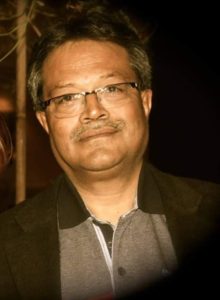
Prof.Prakash Bista is currently Head of Department and Coordinator of M.Ch.program in Neurosurgery at NAMS, Bir Hospital. He has given nearly four decades of life for the upliftment of Neurosurgery at Bir Hospital.
 Medicosnext
Medicosnext
